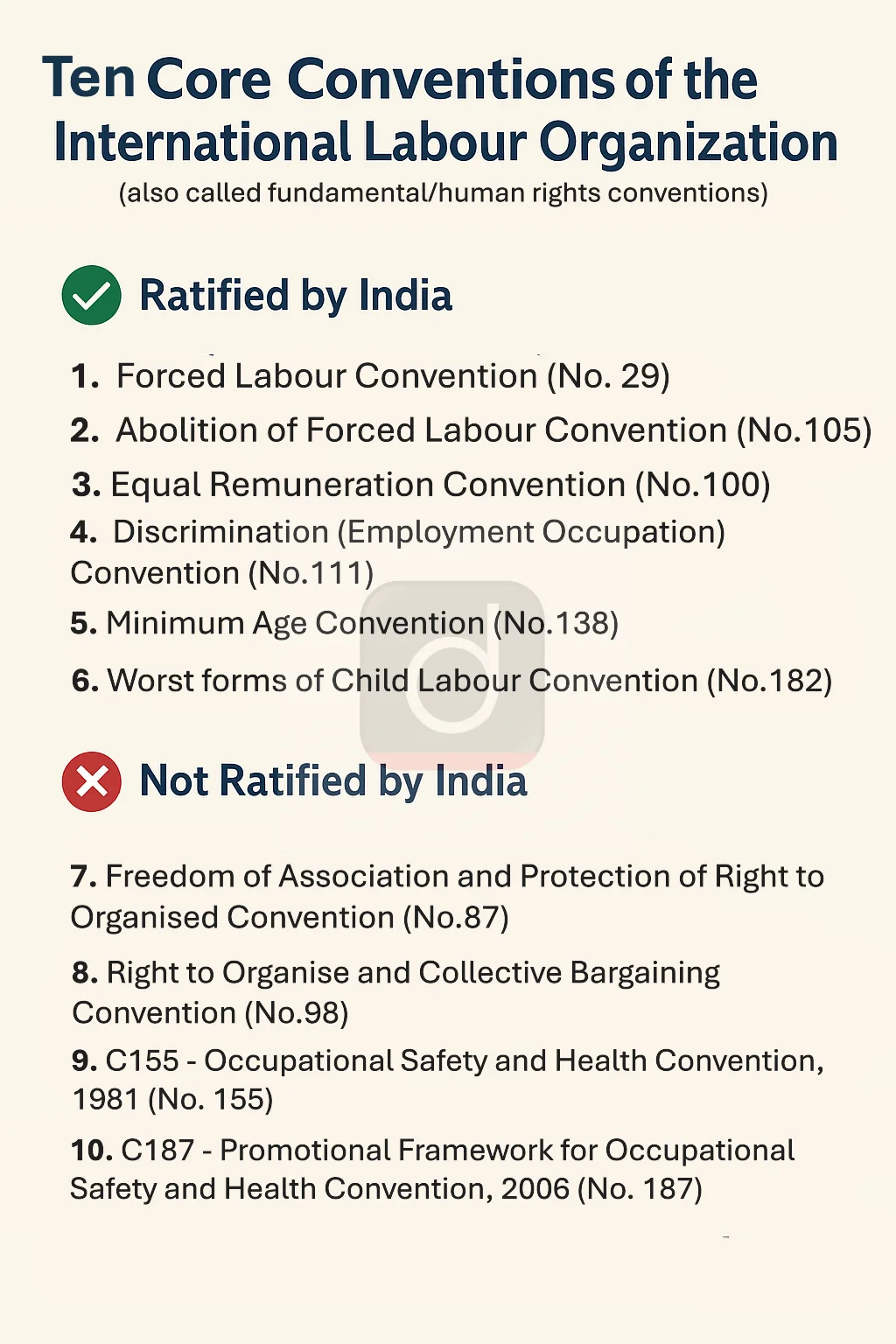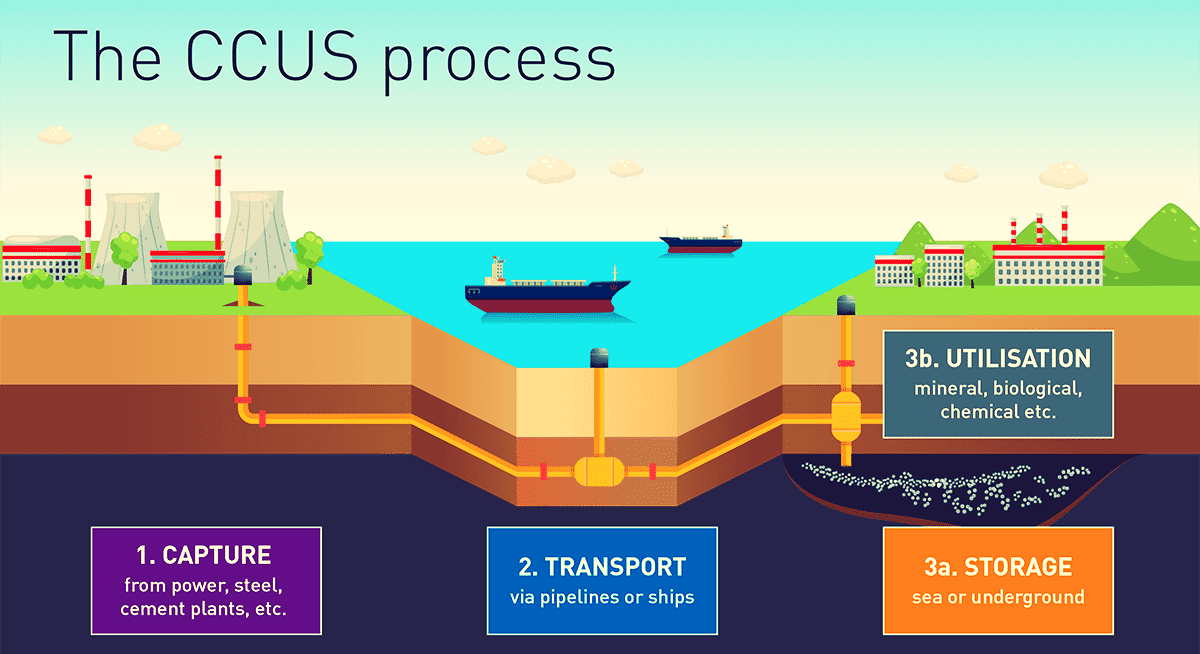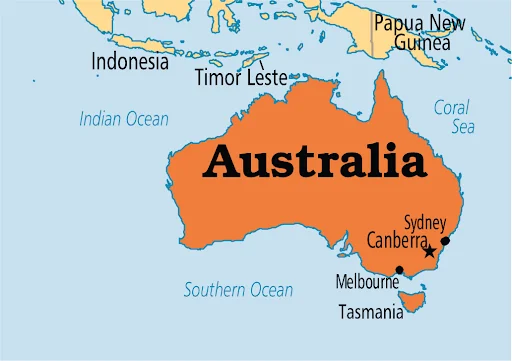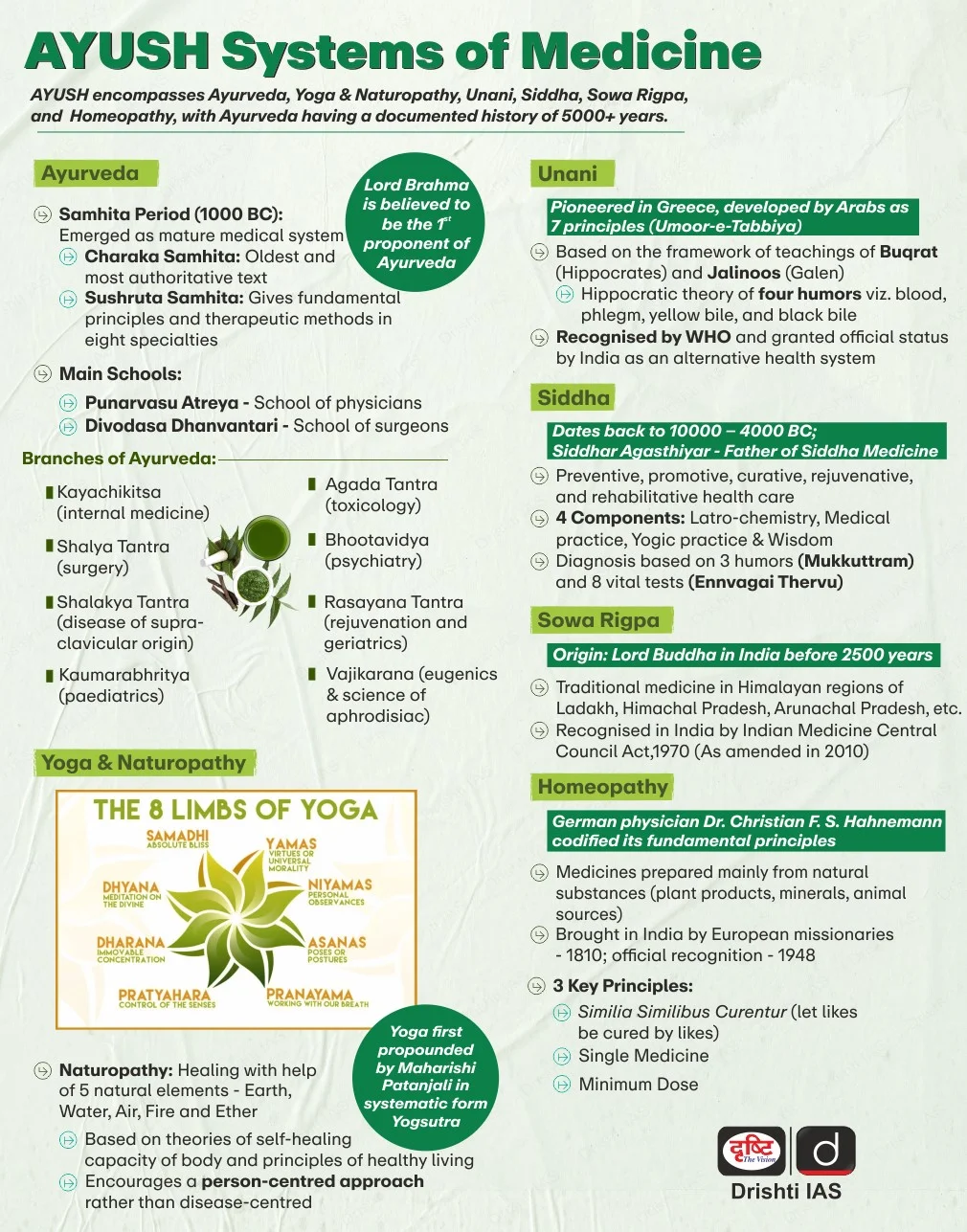Governance
Strengthening Labour Rights in India
For Prelims: International Labour Organization, Pradhan Mantri Shram Yogi Maan-dhan, National Skill Development Corporation
For Mains: Labour Rights and Industrial Safety in India, Challenges in Enforcement of Labour Laws, Informal Sector and Social Security Measures
Why in News?
The Sigachi Industries reactor blast in Telangana, along with a spate of industrial accidents in 2025, has reignited concerns over industrial safety standards and the weakening of labour protections, reviving debates on the erosion of workers’ rights in India.
What are the Reasons for Rising Industrial Accidents in India?
- Negligence and Cost-Cutting: Employers often ignore maintenance, use outdated machinery, and skip safety checks leading to frequent industrial accidents.
- The International Labour Organization (ILO) states that industrial accidents are rarely random and they usually result from employers cutting corners, underinvesting in safety, or forcing workers into long hours and high pressure due to low wages.
- Lack of Training and Safety Systems: Workers are poorly trained, and many sites lack alarms, safety gear, or emergency facilities leading to mishandling of equipment and delayed response during crises.
- At Sigachi Industries, the reactor reportedly ran at twice the permissible temperature without any alarm or intervention, underscoring serious safety lapses.
- Overwork and Fatigue: Long hours and high work pressure increase mistakes in hazardous environments.
- Weak Law Enforcement: Irregular inspections and poor enforcement allow unsafe practices to continue.
- Unregistered Workers: Informal workers lack records, legal protection, and access to compensation, increasing vulnerability.
- Deliberate Actions to Claim Insurance: Some accidents are manipulated or exaggerated to secure insurance payouts, contributing to underreporting of actual workplace safety practices.
What are the Key Labour Laws Governing Workers' Rights in India?
- Factories Act, 1948: Governs working conditions, machinery maintenance, safety standards, working hours, rest breaks, canteens, and crèches.
- Includes provisions for inspections and enforcement to ensure compliance.
- It was amended in 1976 and 1987, the latter after the Bhopal Gas Tragedy, to strengthen safety norms.
- Workmen’s Compensation Act, 1923: Provides compensation to workers injured or killed on the job.
- Employees’ State Insurance (ESI) Act, 1948: Offers health insurance, medical care, and cash benefits to employees in case of sickness, maternity, or employment-related injury.
- Payment of Wages Act, 1936 and Minimum Wages Act, 1948: Ensure timely and fair payment.
- Industrial Disputes Act, 1947: Protects workers’ rights regarding termination, layoffs, and dispute resolution.
- Occupational Safety, Health and Working Conditions (OSHWC) Code, 2020: Consolidates 13 previous labour laws into a single framework. OSHWC Code seeks to regulate safety, health, and working conditions across sectors, though full implementation is pending.
What are the Challenges in Protecting Workers’ Rights in India?
- Systemic Erosion of Legal Safeguards: Labour protections have been diluted under the guise of flexibility and ease of doing business, weakening enforcement mechanisms.
- For example, Maharashtra’s 2015 self-certification rule allowed factories to bypass independent inspections, undermining statutory safety provisions.
- Normalization of Informality and Vulnerability: Policy shifts favoring employer discretion to hire, fire, and extract work without oversight have entrenched informal employment, leaving workers unregistered and without legal or social protection.
- Most contract workers in Sivakasi fireworks factories operate without formal records, making accident compensation irregular and delayed.
- Gendered Exclusion from Economic Gains: Weak enforcement of workplace rights disproportionately affects women, constraining participation and perpetuating gender exclusion
- Corporate Accountability Deficit: Reduced inspections and self-certification limit avenues to hold employers criminally or financially responsible for negligence.
- For instance, industrial disasters like the Ennore coal-handling collapse saw minimal legal consequences for structural failures despite evident lapses.
- Long-Term Economic and Productivity Impact: Unsafe and exploitative work conditions lower productivity, with informal trade workers earning USD 5/hour, nearly half the national average of USD 11/hour, undermining India’s Viksit Bharat 2047 goals.
How can India Strengthen Worker Rights and Improve Safety?
- Reinforce Legal Safeguards: Fully implement the OSHWC Code, 2020, and align labour policies with ILO conventions on workplace safety, decent work, and social protection.
- Formalisation and Social Security: Digitally register informal workers through the Shram Suvidha Portal and integrate them into universal social security coverage, including pensions, health insurance, and paid leave.
- Expand the Pradhan Mantri Shram Yogi Maan-dhan (PM-SYM) pension scheme to cover all informal trade workers.
- Skill Development and Safety Training: Implement sector-specific safety and skilling programs via National Skill Development Corporation (NSDC) and Skill India Mission.
- Accelerate the implementation of Mission Digital ShramSetu as proposed by NITI Aayog.
- Leverage AI-enabled monitoring and predictive tools under #AIforAll to track compliance and hazards in high-risk industries.
- Gender-Inclusive Measures Promote female workforce participation through workplace childcare facilities, maternity benefits under the Maternity Benefit Act, 1961, and vocational training programs targeted at women in informal sectors.
- Corporate Social Responsibility (CSR) Compliance: Encourage adherence to Environmental, Social, and Governance (ESG) criteria among businesses.
- Integrate worker welfare considerations into corporate CSR strategies.
- Promote Collective Action and Safety Culture: Encourage collective bargaining, worker representation, and whistleblower protection.
- Foster a “safety-first” industrial culture, treating worker protection as an investment rather than a cost.
- Data-Driven Monitoring: Establish national dashboards to track compliance, accident rates, and social protection coverage, enabling targeted policy interventions and preventing negligence.
Conclusion
Protecting worker rights needs strong laws, social security, skills training, gender inclusion, corporate accountability, and data-driven monitoring. Addressing these will safeguard workers, boost productivity, and advance Viksit Bharat 2047.
|
Drishti Mains Question: How do systemic erosion and weak enforcement affect labour rights in India, and what reforms can address these gaps? |
Frequently Asked Questions (FAQs)
1. What are the main causes of workplace accidents in India?
Outdated machinery, poor safety systems, long work hours, unregistered workers, and weak law enforcement.
2. Which laws protect industrial workers in India?
Key laws include the Factories Act 1948, Occupational Safety, Health and Working Conditions (OSHWC) Code, 2020, Workmen’s Compensation Act 1923, ESI Act 1948, Payment of Wages Act 1936, and Minimum Wages Act 1948.
3. How has the OSHWC Code, 2020, reformed worker safety regulations?
It consolidates 13 labour laws to streamline safety, health, and working conditions, though full implementation is pending.
4. What measures can improve worker rights and industrial safety?
Reinforcing legal safeguards, formalising informal workers, skill training, gender inclusion, corporate accountability, and AI-enabled monitoring.
UPSC Civil Services Examination, Previous Year Question (PYQ)
Prelims
Q. Consider the following statements: (2017)
- The Factories Act, 1881 was passed with a view to fix the wages of industrial workers and to allow the workers to form trade unions.
- N.M. Lokhande was a pioneer in organizing the labour movement in British India.
Which of the above statements is/are correct?
(a) 1 only
(b) 2 only
(c) Both 1 and 2
(d) Neither 1 nor 2
Ans: (b)
Mains
Q. “Success of ‘Make in India’ programme depends on the success of ‘Skill India’ programme and radical labour reforms.” Discuss with logical arguments. (2015)


Biodiversity & Environment
Carbon Capture, Usage and Storage(CCUS)
For Prelims: Carbon Capture Usage and Storage (CCUS), Greenhouse Gas, Bioenergy, Direct Air Capture, LNG,
For Mains: Efficacy and risks of Carbon Capture, Utilization and Storage (CCUS) as a climate mitigation strategy, its associated challenges, India's position and initiatives in CCUS.
Why in News?
A Climate Analytics report warns that Asia’s vast Carbon Capture Usage and Storage (CCUS) plans could result in nearly 25 billion tonnes of extra greenhouse gas emissions by 2050.
- This is because most CCS projects across China, Japan, South Korea, and Indonesia are designed less to cut emissions and more to extend the life of coal, oil, and gas.
What is Carbon Capture, Usage and Storage?
- About: CCUS is a suite of technologies that capture CO₂ emissions from major sources like power plants, refineries, and industries, or remove CO₂ from the atmosphere.
- Working of CCUS: CCUS involves three main stages — capture, transport, and storage (or use) of CO₂.
- Capture methods include:
- Post-combustion: Separates CO₂ from flue gas using solvents after fuel combustion.
- Pre-combustion: Converts fuel into a hydrogen–CO₂ mix before burning, then separates CO₂.
- Oxy-fuel combustion: Burns fuel in pure oxygen, producing CO₂ and steam for easy capture.
- Captured CO₂ is compressed and transported via pipeline, ship, rail, or road and injected into deep geological formations like depleted oil and gas fields or saline aquifers for long-term storage. Alternatively, it may be used in commercial applications.
- Capture methods include:
- Role in Tackling Climate Change: CCUS plays a key role in global decarbonisation by:
- Reducing emissions in hard-to-abate sectors like steel, cement (7% of global emissions), and chemicals.
- Producing low-carbon electricity and hydrogen to replace fossil fuels across industries and transport.
- Removing existing CO₂ from the atmosphere through Bioenergy with CCS (BECCS) and Direct Air Capture (DACCS).
- It can be installed on coal, gas, or biomass plants, enhancing energy security by diversifying low-carbon energy sources.
Why Does Asia’s Increasing Dependence on CCUS Raise Climate Concerns?
- Massive Excess Emissions: Depending on the CCUS scenario, Asia could emit an additional 24.9 gigatonnes of CO₂-equivalent by 2050—more than the combined fossil fuel emissions of South Korea and Australia.
- This overshoot isn't minor; it's a potential disaster that would single-handedly jeopardize global climate targets.
- Economic Lock-In: A high-CCS pathway risks locking countries into expensive, outdated fossil fuel infrastructure, creating stranded assets and diverting investment from cleaner alternatives.
- Exacerbate Regional Vulnerabilities: A high-CCS pathway fuels the climate threats that most endanger Asia—sea-level rise, monsoonal instability, and heatwaves—while perpetuating deadly air pollution from uncaptured NOx and SOx.
- Growing Energy Demand: Governments are using CCUS as an energy security strategy to exploit domestic fossil fuels like coal and gas, paying lip service to climate goals while avoiding a full renewable transition.
What is India’s Current Status in the CCUS?
- Limited Deployment: India currently has minimal CCS infrastructure with no major operational projects or storage facilities, leaving it largely disconnected from regional CCS networks.
- CCU Testbeds for Cement Sector: India has launched its first cluster of five CCU testbeds for the cement sector, under a Public-Private Partnership (PPP) model, focusing on:
- Oxygen-enhanced Calcination: Converting CO₂ into concrete blocks and olefins (e.g., ethylene, propylene).
- Carbon-negative Mineralisation: Permanently locking CO₂ into rock formations.
- Vacuum Swing Adsorption: Separating CO₂ from cement kiln gases and integrating it back into construction materials.
- National Centres in Carbon Capture: Supported by the Department of Science & Technology, India is establishing two National Centres of Excellence (CoE) in Carbon Capture and Utilization (CCU) at:
- NCoE-CCU at IIT Bombay, Mumbai, and
- NCCCU at JNCASR, Bengaluru.
- Renewable Advantage: India’s progress in solar, wind, electric mobility, and green hydrogen offers a decarbonisation pathway without heavy CCUS.
- USD 4.3 billion in government support for CCS raises debate on directing funds toward renewables and green innovation.
What are the Key Concerns Associated with CCUS?
- Low Capture Efficiency: Most CCS projects capture only around 50% of CO₂, far below the 95% required for meaningful emission abatement, making them less effective as a climate solution.
- Fossil Fuel Dependence: About 80% of existing CCS projects use captured CO₂ for Enhanced Oil Recovery (EOR), which extends fossil fuel extraction rather than reducing it.
- High Economic Costs: CCS-based power generation can make electricity up to twice as expensive as renewables with storage. CCUS facilities are both capital- and energy-intensive, raising concerns about economic viability, especially in Asia.
- Sectoral Misalignment: Most CCS projects target fossil fuel sectors like gas, LNG, and hydrogen production — areas that already have zero-emission alternatives — while hard-to-abate sectors such as steel and cement receive minimal investment.
- Emergence of Cheaper Alternatives: Renewables, electrification, and energy efficiency are already more cost-effective than fossil fuels with CCS. A high-CCS pathway could cost up to USD 30 trillion more globally by 2050 compared to a low-CCS route.
- Environmental Risks: Potential CO₂ leakage from underground storage could reverse emission reductions and damage ecosystems.
What Strategy Should India Adopt for CCUS in its Green Transition Pathway?
- Prioritize Renewables: Focus on solar, wind, green hydrogen, and electric mobility as primary decarbonization pathways. Use CCUS only where emissions are hard to abate, such as steel, cement, and chemical industries.
- Pilot and Scale Selectively: Implement small-scale, high-efficiency CCUS projects to evaluate cost-effectiveness and environmental safety. Avoid blanket deployment that encourages continued fossil fuel reliance.
- Develop Storage Atlas: Storage is as crucial as the Capture; without safe, accessible storage, CCUS is ineffective.
- Oil and Natural Gas Corporation (ONGC) and the Geological Survey of India (GSI) should map depleted oil and gas fields (e.g., Bombay High) and deep saline aquifers to reduce investment risks.
- Technology Transfer & Finance: Negotiate with developed countries for CCUS technology and finance, positioning it as key for Global South industrialization. Invest in R&D for Direct Air Capture (DAC) and BECCS to lead in climate restoration technologies.
Conclusion
Asia's over-reliance on CCUS as a primary climate strategy risks massive emissions, economic lock-in, and derailing the 1.5°C goal. For India and others, prioritizing proven, cheaper alternatives like renewables and green hydrogen over costly, inefficient CCUS is the more viable path to decarbonization.
|
Drishti Mains Question: What is Carbon Capture, Usage and Storage (CCUS)? Critically analyse the risks and limitations of CCUS in tackling climate change. |
Frequently Asked Questions (FAQs)
1. What is Carbon Capture, Usage and Storage (CCUS)?
CCUS captures CO₂ from power plants, industries, or the atmosphere, transporting it for storage in geological formations or industrial use to mitigate climate change.
2. How does Enhanced Oil Recovery (EOR) link to CCUS projects?
Approximately 80% of current CCS projects use captured CO₂ for Enhanced Oil Recovery (EOR), which extends fossil fuel extraction, thereby undermining the technology's climate mitigation potential.
3. Why are Asia’s CCUS plans considered risky?
They could produce 24.9 Gt extra CO₂ by 2050, lock economies into fossil fuels, and divert investments from cleaner, cost-effective technologies.
UPSC Civil Services Examination, Previous Year Questions (PYQs)
Prelims
Q1. Consider the following agricultural practices: (2012)
- Contour bunding
- Relay cropping
- Zero tillage
In the context of global climate change, which of the above helps/help in carbon sequestration/storage in the soil?
(a) 1 and 2 only
(b) 3 only
(c) 1, 2 and 3
(d) None of them
Ans: (b)
Q2. In the context of mitigating the impending global warming due to anthropogenic emissions of carbon dioxide, which of the following can be the potential sites for carbon sequestration? (2017)
- Abandoned and uneconomic coal seams
- Depleted oil and gas reservoirs
- Subterranean deep saline formations
Select the correct answer using the code given below:
(a) 1 and 2 only
(b) 3 only
(c) 1 and 3 only
(d) 1, 2 and 3
Ans: (d)


Facts for UPSC Mains
Shaping India’s Future through Biomedical Research Programme
Why in News?
The Union Cabinet has approved Phase-III of the Biomedical Research Career Programme (BRCP), shaping India’s next frontiers in science through biomedical research and strengthening the nation’s innovation capacity in line with Viksit Bharat 2047.
What is the Biomedical Research Career Programme (BRCP)?
- About: The BRCP is a flagship Indo-UK initiative launched in 2008–09, the programme is jointly implemented by the Department of Biotechnology (DBT), Government of India, and the Wellcome Trust, UK.
- BRCP aligns with national missions such as Atmanirbhar Bharat, Swasth Bharat, and Startup India.
- Phase II of the BRCP was launched in 2018–19 with an expanded portfolio and broader research areas.
- Phase III will be implemented from 2025–26 to 2030–31, with an extended service phase up to 2037–38.
- Main Objectives
- Build a world-class biomedical research ecosystem in India.
- Support scientists at all career stages from early-career to senior researchers through fellowships and grants.
- Encourage interdisciplinary, ethical, and translational research that directly improves healthcare and public health outcomes.
- Phase-III targets training 2,000 researchers, advancing 25–30% projects to Technology Readiness Level (TRL-4) and above, promoting patentable research, and increasing women scientist participation by 10–15% for greater inclusivity.
- Achievements: The BRCP has supported 721 research grants and played a key role in shaping India’s COVID-19 research response.
What are India’s Emerging Frontiers in Biomedical Research and Innovation?
- Genomics & Human Genetics: Initiatives like GenomeIndia and UMMID (Unique Methods of Management and Treatment of Inherited Disorders) map India’s genetic diversity to enable precision medicine and early diagnosis of rare diseases.
- dbGENVOC, developed by DBT-National Institute of Biomedical Genomics (NIBMG), is the world’s first public oral cancer genomic database, hosting over 24 million variants to support prevention, diagnosis, and treatment in India.
- Infectious Disease Biology: India's research on Human immunodeficiency virus (HIV), Tuberculosis (TB), malaria, Covid-19, and dengue, led to innovations like the Dengue Day 1 test and HIV Tri-Dot+Ag test.
- Vaccine Development: Supported by the Indo-US Vaccine Action Programme (VAP), India has developed key indigenous vaccines such as ROTAVAC and Covaxin.
- Current efforts target diseases like dengue, malaria, and pneumonia, enhancing self-reliance and export potential.
- Diagnostics & Medical Devices: Tools like Clustered Regularly Interspaced Short Palindromic Repeats (CRISPR) based tests, indigenous Reverse transcription polymerase chain reaction (RT-PCR) kits, and affordable devices improve early detection and healthcare access.
- Therapeutics & Drug Repurposing: India is accelerating affordable drug development by repurposing existing drugs for new indications. This approach shortens clinical trial timelines and regulatory approvals, making therapies more accessible for India’s large population.
- Biomedical Engineering & Biodesign: Under Production Linked Incentive scheme for promoting domestic manufacturing of Medical Devices (PLI MD), India develops low-cost implants, assistive devices, and medical instruments, reducing dependence on imports.
- Maternal & Child Health: Programs like GARBH-ini study pre-term births and developmental risks to improve maternal and child care.
- National Antimicrobial resistance (AMR) supports R&D for affordable, evidence-based solutions to address AMR, lifestyle diseases, and malnutrition.
- Initiatives like BioCARe (career development of unemployed female scientists), Janaki Ammal Award (recognizes outstanding contributions to the field of taxonomy), and women-focused incubators promote gender inclusivity and leadership.
India as the ‘Pharmacy of the World’
- Global Recognition: India is globally known as the “Pharmacy of the World” for its role in supplying affordable vaccines, medicines, and medical supplies worldwide, especially during the Coivd-19 pandemic.
- India's pharma industry is considered to be the world's third largest by volume and 14th in terms of value of production.
- Export Growth: Drug and pharmaceutical exports rose by 8.36%, from 2023 to 2024.
- Exports increased from USD 15.07 billion in 2013–14 to USD 27.85 billion in 2023–24.
- India exports to around 200 countries, with top markets including the USA, Belgium, South Africa, the UK, and Brazil.
- Biotechnology Boom: India’s biotech sector expanded from USD 10 billion (2014) to USD 130 billion (2024) and is projected to hit USD 300 billion by 2030.
- Growth is evenly distributed across metro, Tier-I, and rural markets ( with 30% share each).
What Measures can Ensure Long-Term Sustainability of Biomedical Research in India?
- Policy and Regulatory Reforms: Establish a National Biomedical Research Authority (NBRA) to streamline ethical clearances and data governance.
- Integrate open science frameworks for transparency and collaboration.
- Financial and Institutional Sustainability: Create a National Biomedical Innovation Fund (NBIF) for continued support post-2037. Strengthen public–private partnerships (PPP) for translational research and manufacturing.
- Regional Research Clusters: Develop BioInnovation Hubs in Tier-2/3 cities to decentralize R&D capacity and promote local employment.
- Skill Development and Education: Introduce biomedical innovation fellowships and interdisciplinary curricula in medical and engineering institutions.
- Monitoring and Impact Assessment: Use AI-driven dashboards to track fellowship outcomes, technology readiness, and gender parity metrics.
Conclusion
The BRCPI, alongside initiatives like BioE3, is propelling India towards becoming a global hub for affordable and impactful biomedical innovation. Aligned with DG-3 (Good Health and Well-being) and SDG-9 (Industry, Innovation, and Infrastructure), it strengthens healthcare, fosters inclusivity, and advances scientific leadership on the world stage.
|
Drishti Mains Question: Biomedical research is central to achieving India’s vision of Viksit Bharat 2047. Discuss. |
Frequently Asked Questions (FAQs)
1. What is the Biomedical Research Career Programme (BRCP)?
BRCP is a flagship Indo-UK initiative aimed at building a world-class biomedical research ecosystem in India.
2. What are India’s emerging frontiers in biomedical research?
Key areas include genomics, infectious disease biology, vaccine development, diagnostics, therapeutics, biomedical engineering, maternal & child health, and public health nutrition.
3. What is dbGENVOC and its significance?
dbGENVOC, developed by DBT-NIBMG, is the world’s first public oral cancer genomic database with 24+ million variants, supporting prevention, diagnosis, and treatment in India.


Important Facts For Prelims
Nobel Peace Prize 2025
Why in News?
The Norwegian Nobel Committee has awarded the Nobel Peace Prize 2025 to Maria Corina Machado in recognition of her tireless efforts to promote democratic rights in Venezuela and her unwavering struggle for a just and peaceful transition from dictatorship to democracy.
What are the Key Highlights of the Nobel Peace Prize 2025?
- Laureate: María Corina Machado, a Venezuelan politician and pro-democracy activist, widely known as the "Iron Lady of Venezuela" for her courageous stand against authoritarianism.
- Since 1999, Venezuela has shifted from a relatively stable democracy to a deeply entrenched authoritarian state. With citizens facing poverty and limited freedoms, while the opposition struggles under constant threats.
- Maria Corina Machado Contributions: She founded the Atenea Foundation in 1992 to support street children and co-founded Súmate to monitor elections and promote free and fair voting.
- Mobilised citizens and opposition groups by advocating “ballots over bullets,” promoting peaceful civic participation over violent resistance.
- She stood firmly against authoritarian rule while remaining in Venezuela under threats, working to unify the pro-democracy movement.
- Global Significance: 2025 Nobel Peace Prize to Maria Corina Machado highlights that democracy is the foundation of peace, both within countries and internationally.
Did you Know?
- India has two Nobel Peace Prize laureates: Mother Teresa (1979) and Kailash Satyarthi (2014)
- Mother Teresa: Awarded for her work for bringing help to suffering humanity.
- Kailash Satyarthi: Shared the 2014 Nobel Peace Prize with Malala Yousafzai for his work against the suppression of children and for the right of all children to education.
- He founded the Bachpan Bachao Andolan (Save the Childhood Movement).
- Nobel Peace Prize: Since 1901, the Nobel Peace Prize has been awarded to individuals or organizations promoting fraternity between nations, reducing standing armies, or advancing peace.
- Initially, it recognised pioneers of the peace movement, later shifting to politicians, diplomats, and humanitarian work.
- Since World War II, the focus has been on arms control, peace negotiation, democracy and human rights, and creating a more peaceful world.
- In the 21st century, efforts addressing climate change and environmental threats are also considered.
|
Click here to Read: Nobel Prize in Literature 2025 |
Frequently Asked Questions (FAQs)
1. Who is the Nobel Peace Prize 2025 laureate?
Maria Corina Machado for promoting democracy and peaceful transition in Venezuela.
2. Which Indians have won the Nobel Peace Prize?
Mother Teresa (1979) and Kailash Satyarthi (2014).
3. What are the main categories of the Nobel Peace Prize?
The Nobel Peace Prize is awarded to individuals or organizations promoting peace, resolving conflicts, advancing democracy and human rights, or contributing to global stability and humanitarian work.


Important Facts For Prelims
Maitri II Research Station in Antarctica
Why in News?
The Ministry of Finance has given in-principle approval for setting up Maitri II, India’s new research station in east Antarctica.
What is Maitri II?
- About: Maitri II is India's upcoming and fourth research station in Antarctica, scheduled to be completed by January 2029.
- It strengthens India’s long-term scientific presence under the Antarctic Treaty System (ATS, 1959).
- Purpose & Need: It is being built to replace the old Maitri station (1989), which has surpassed its original design life of 10 years and has issues like flawed waste management.
- Nodal Agency: The project is led by the National Centre for Polar and Ocean Research (NCPOR) in Goa, under the Ministry of Earth Sciences.
- Key Features:
- Larger and Greener: Bigger than the original Maitri, planned as a "green research base."
- Renewable Energy: Uses solar power for summer and wind energy to harness Antarctic winds.
- Advanced Technology: Equipped with automated instruments to record and relay data to mainland India even when unmanned.
- Improved Infrastructure: Features upgraded living conditions and improved toilets.
- Significance:
- Antarctica contains 75% of Earth’s freshwater, and studying its ice sheets is crucial for forecasting sea-level rise.
- Critical for understanding untapped mineral deposits, marine biodiversity, and ecological baselines.
- Reinforces India’s voice in global climate and polar governance discussions.
India’s Other Research Stations in Antarctica
- Dakshin Gangotri (1983): Dakshin Gangotri, established under the Indian Antarctic Program in 1983, was India’s first scientific research base in Antarctica, but it was submerged in ice and decommissioned in 1990.
- The Indian Antarctic Programme, led by NCPOR, began in 1981 to conduct scientific research and protect India’s interests in the polar region.
- Maitri (1989): Maitri is India’s second permanent research station in Antarctica, established in 1989.
- It is located in the rocky mountainous Schirmacher Oasis, and India also created a freshwater lake nearby, called Lake Priyadarshini.
- Bharti (2012): Located about 3,000 km east of Maitri, the ‘Bharati’ research station lies between Thala Fjord and Quilty Bay.
- Commissioned in 2012, it has a compact design and supports year-round scientific research under the Indian Antarctic Program.
Did You Know?
- Antarctica is the fifth-largest continent, located within the Antarctic Circle and surrounded by the Southern Ocean. It spans about 14 million sq. km, with 98% covered by ice and containing over 75% of Earth’s freshwater reserves.
- Antarctica has no native human population, and human presence is limited to scientific researchers at about 69 research stations.
- The Antarctic Treaty, signed in 1959, was designed to govern the continent, ensuring it is used for peaceful purposes and scientific cooperation, while suspending territorial claims.
Frequently Asked Questions (FAQs)
1. What is Maitri II?
Maitri II is India’s fourth research station in Antarctica, approved by the Finance Ministry to replace the aging Maitri station. It is designed as a modern, green, and technologically advanced base with completion targeted by January 2029.
2. What are India’s other Antarctic research stations?
Dakshin Gangotri (1983)-India’s first base, decommissioned in 1990, Maitri (1989)- Located in Schirmacher Oasis, supports seasonal and year-round research and Bharati (2012)- Compact station east of Maitri for continuous scientific research under the Indian Antarctic Program.
3. Why is Antarctica important for global climate and science?
It covers 14 million sq. km, is 98% ice, holds over 75% of Earth’s freshwater, drives global ocean currents, and regulates climate.
UPSC Civil Services Examination, Previous Year Question (PYQ)
Q. The term ‘IndARC’, sometimes seen in the news, is the name of (2015)
(a) an indigenously developed radar system inducted into Indian Defence
(b) India’s satellite to provide services to the countries of Indian Ocean Rim
(c) a scientific establishment set up by India in Antarctic region
(d) India’s underwater observatory to scientifically study the Arctic region
Ans: (d)


Rapid Fire
AUSTRAHIND 2025
An Indian Army contingent has departed for Australia to participate in the fourth edition of the India-Australia joint military exercise ‘AUSTRAHIND 2025’, highlighting growing defence cooperation between the two nations.
- Exercise AUSTRAHIND: It was instituted in 2022 and the first edition was conducted in Mahajan, Rajasthan.
- It is planned to be an annual training event to be conducted alternatively in India and Australia.
- AUSTRAHIND aims to foster collaborative partnership and share best practices between the two sides.
- The exercise will also promote inter- operability while undertaking multi-domain operations in Urban and Semi- Urban terrain under Chapter VII of United Nations on peace keeping operations.
- India-Australia Defence Relations: India’s defence ties with Australia gained momentum after both countries became Comprehensive Strategic Partners in 2020 and signed a Mutual Logistics Support Agreement in 2021.
- Both countries also participate in multilateral exercises such as Malabar, Talisman Sabre, and Cope India, reflecting their shared commitment to regional security and interoperability in the Indo-Pacific.
| Read more: India-Australia Relations |


Rapid Fire
Zoho Platform
In a major move towards indigenising digital infrastructure the Government of India has migrated over 12 lakh official email accounts, including those of the Prime Minister’s Office (PMO), from National Informatics Centre to a Zoho-developed platform, reinforcing data sovereignty and Swadeshi tech adoption.
Zoho
- About: Zoho Corporation is a global Software-as-a-Service (SaaS) leader founded in 1996 in India. Headquartered in Chennai, it serves over 100 million users across more than 150 countries.
- It offers a vast portfolio of over 55 cloud-based business applications, including Zoho Workplace and Zoho Office Suite, which directly compete with Microsoft 365 and Google Workspace.
- Security Framework: Zoho platform is audited regularly by Software Quality Systems (SQS).
- Security clearance and inputs were obtained from NIC, CERT-In, and other government agencies.
- Key Differentiators:
- Privacy-First Model: It differentiates itself by not relying on ad revenue, thereby prioritising user data privacy.
- Cost-Effectiveness: Its services are generally more affordable than those of its competitors, making it popular among small and medium-sized businesses.
- Self-Reliant India vision: Despite being incorporated in the US, the company runs its major operations from rural Tamil Nadu, aligning with the Atmanirbhar Bharat (Self-Reliant India) vision.
| Read More: Swadeshi Movement and Self -Reliant India |


Rapid Fire
DRAVYA Portal
The Ministry of Ayush launched the DRAVYA portal (Digitised Retrieval Application for Versatile Yardstick of Ayush) in Goa, marking the creation of the most comprehensive digital repository of Ayurvedic ingredients and formulations.
DRAVYA Portal
- About: The DRAVYA Portal is a landmark in India’s Ayush digital transformation, bridging traditional knowledge and modern innovation.
- AI-ready platform, enabling integration with the Ayush Grid and other Ministry initiatives to strengthen research, regulation, and global recognition of India’s rich medicinal heritage.
- In its first phase, it aims to catalogue 100 key medicinal substances, ensuring precision and authenticity through a dedicated data-entry software.
- Developed by: Central Council for Research in Ayurvedic Sciences (CCRAS), an autonomous body under the Ministry of AYUSH.
- Key Features:
- Contains detailed profiles of Ayurvedic substances across pharmacotherapeutics, botany, chemistry, pharmacology, and safety data.
- Facilitates intelligent data analysis, linking with the Ayush Grid and national health databases for policy, research, and innovation.
- Supports researchers, practitioners, students, and policymakers in evidence-based study, pharmacopoeial harmonisation, and drug validation.
| Read More: AYUSH Systems of Medicine |












